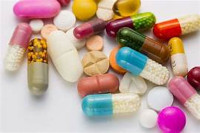Annona muricata L., Stem-Bark Exhibit Antidepressant-Like Activity in SpragueDawley Rats
http://www.doi.org/10.26538/tjnpr/v7i6.26
Keywords:
Immobility time, Forced swim test, Antidepressant, AmbulatoryAbstract
Annona muricata L. (Annonaceae) is widely used in the Amazon and Carribean in natural medicine as an antiparasitic, insecticidal, sedative and as an astringent for diarrhea among others. In Nigeria however, Annona muricata is among the under-utilized species of plants. This study investigated the antidepressant and ambulatory effect of A. muricata, using the open field test and forced swim tests on Sprague-Dawley rats administered ethanol stem-bark extracts of the Nigerian grown species. Rats were administered A. muricata stem-bark extract (50, 150 and 300mg/kg) alone and in combination with the drugs imipramine and sertraline (10mg/kg), respectively for 14 days. The administration of the extract was observed to cause a significant reduction in the swimming time and immobility time of the rats in the forced swim test. The ambulatory behavior of the rats was observed to decrease when the extract (150 and 300mg/kg) was administered alone to the rats while a much further decrease was observed in the explorative tendencies of the rats when the extract was combined with the imipramine and sertraline. The results suggested that the ethanol stem-bark extract of A.muricata, possess sedative and antidepressant effects.
References
Coria-Téllez AV, Montalvo-Gónzalez E, Yahia EM, ObledoVázquez EN. Annona muricata: A Comprehensive Review on Its Traditional Medicinal Uses, Phytochemicals, Pharmacological Activities, Mechanisms of Action and Toxicity. Arab. J. Chem. 2018; 11:662–691. doi:10.1016/j.arabjc.2016.01.004.
Wahab SMA, Jantan I, Haque MA, Arshad L. Exploring the Leaves of Annona muricata L. as a Source of Potential AntiInflammatory and Anticancer Agents. Front. Pharm. 2018; 9:661. doi: 10.3389/fphar.2018.00661.
Agu KC, Okolie NP, Falodun A, Engel-Lutz N. In vitro anticancer assessments of Annona muricata fractions and in vitro antioxidant profile of fractions and isolated acetogenin (15-acetyl guanacone). J. Cancer Res. Pract. 2018; 5 (2):53- 66
Kedari TS, Khan AA. Guyabano (Annona muricata): A review of its traditional uses- phytochemistry and pharmacology. AJRC. 2014; 2 (10):247-268
Taylor L. The Healing Power of Rainforest Herbs. A guide to Understanding and Using Herbal Medicinals. 2005; Publ. Squareone: Garden City Park, NY 11040. Paperback ed. ISBN 0-7570-0144-0
Nugraha AS, Damayanti YD, Wangchuk P, Keller PA. AntiInfective and Anti-Cancer Properties of the Annona Species: Their Ethnomedicinal Uses, Alkaloid Diversity, and Pharmacological Activities. Molecules. 2019; 24:4419. doi: 10.3390/molecules24234419
Balderrama-Carmona AP, Silva-Beltrán NP, Gálvez-Ruiz JC, Ruíz-Cruz S, Chaidez-Quiroz C, Morán-Palacio EF. Antiviral, Antioxidant, and Antihemolytic Effect of Annona muricata L. Leaves Extracts. Plants. 2020; 9:1650. doi: 10.3390/plants9121650
Gavamukulya Y, Wamunyokoli F, El-Shemy HA. Annona muricata: is the natural therapy to most disease conditions including cancer growing in our backyard? A systematic review of its research history and future prospects. Asian Pac. J. Trop. Med. 2017; 10: 835–848. doi: 10.1016/j.apjtm.2017.08.009
Ngoua-Meye-Misso RL, Sima-Obiang C, Ndong JDLC, Ndong-Atome GR, Ondo JP, Ovono Abessolo F, ObameEngonga LC. Medicinal Plants Used in Management of Cancer and Other Related Diseases in Woleu-Ntem Province, Gabon. Eur. J. Integr. Med. 2019; 29:100924
Sarris J. Herbal medicines in the treatment of psychiatric disorders: a systematic review. Phytother. Res. 2007; 21:703 – 716.
Pavithra VH, Vishnupriya V, Gayathri R. Herbal remedies for anxiety and Depression – A review. Res. J. Pharm. Technol, 2016. (6) 8:1253 – 1258. doi:.5958/0974- 360X.2016.00237.7
NICE. NICE Guidelines: Depression in children and adolescents. London: 2005; NICE. p. 5. ISBN 1-84629-074- 0.
World Health Organization. Media Centre Depression. 2012; Fact sheet No 369.
Thomas H, Nikles J. Herbal Medicines Used in the Treatment of Chronic Insomnia and How They Influence Sleep Patterns: A Review. J Complement Med Alt Healthcare. 2018; 6(1): 555680. DOI: 10.19080/JCMAH.2018.06.555680
Sarris J, Byrne G. A systematic review of insomnia and complementary medicine. Sleep Med. Rev. 2011; 15(2):99- 106.
Kwon CY, Suh HW, Choi EJ, Chung SY, Kim JW. Complementary and Alternative Medicine in Clinical Practice Guideline for Insomnia. JON. 2016; 4(27):235-248
Odugbemi T. A textbook of medicinal plants from Nigeria. 2008; University of Lagos Press, Lagos: 564.
Folorunsho AE, Olorode O. Biosystemic Studies in Annonaceae I. Vegetative and Floral Morphological Studies of some species of Annona in Nigeria. Res.J. Bot. 2006 1:118-124
Bikomo EO, Ebuehi OAT, Magbagbeola OA. Antidepressant activity of ethanol leaf extrach of Annona muricata L., in Sprague-Dawley rats. J. Biochem 2017; 7(1):1-5
Royce IR. “On the construct validity of open-field measures,” Psychol. Bull.1977; 84(6): 1098-1106.
Porsolt RD, Bertin A, Jalfre M. Behavioral despair in mice: a primary Screening test for antidepressants. Arch Intl Pharmacodyn Ther. 1977; 229:327–336.
Slattery DA, Cryan JF. "Using the rat forced swim test to assess antidepressant-like activity in rodents". Nat. Protoc. 2012; 7 (6):1009–1014. Doi:
1038/nprot.2012.044. PMID 22555240.
Stanford SC. “The Open Field test: Reinventing the wheel”. J. Psychopharmacol. 2007; 21(2):134-4.
Fitzgerald PJ, Yen JY, Watson BO. Stress-sensitive antidepressant-like effects of ketamine in the mouse forced swim test. PLoS One. 2019; 14(4):e0215554. doi: 10.1371/journal.pone.0215554.
Liang Y, Yang X, Zhang X, Duan H, Jin M, Sun Y, Yuan H, Li J, Qi Y, Qiao W. Antidepressant-like effect of the saponins part of ethanol extract from SHF. J. Ethnopharmacol. 2016; 191:307-314
Aswathi R, Venkateswaramurthy N, Sambath KR. A review on the relevance of herbal medications for psychiatric patients. Res. J. Pharm. Technol, 2019; (12)7:3151–3156 doi: 10.5958/0974-360X.2019.00531.6
Pennington ZT, Dong Z, Feng Y, Vetere LM, Page-Harley L, Shuman T, Cai DJ. ezTrack: An open-source video analysis pipeline for the investigation of animal behavior. Sci. Rep. 2019; 9:19979. doi: 10.1038/s41598-019-56408-9
Petit-Demouliere, B; Chenu, F; Bourin, M. "Forced swimming test in mice: a review of antidepressant activity". Psychopharmacology. (2005). 177 (3): p 245– 55. doi:10.1007/s00213-004-2048-7.

Published
How to Cite
Issue
Section
License
Copyright (c) 2023 Tropical Journal of Natural Product Research (TJNPR)

This work is licensed under a Creative Commons Attribution-NonCommercial-NoDerivatives 4.0 International License.


















